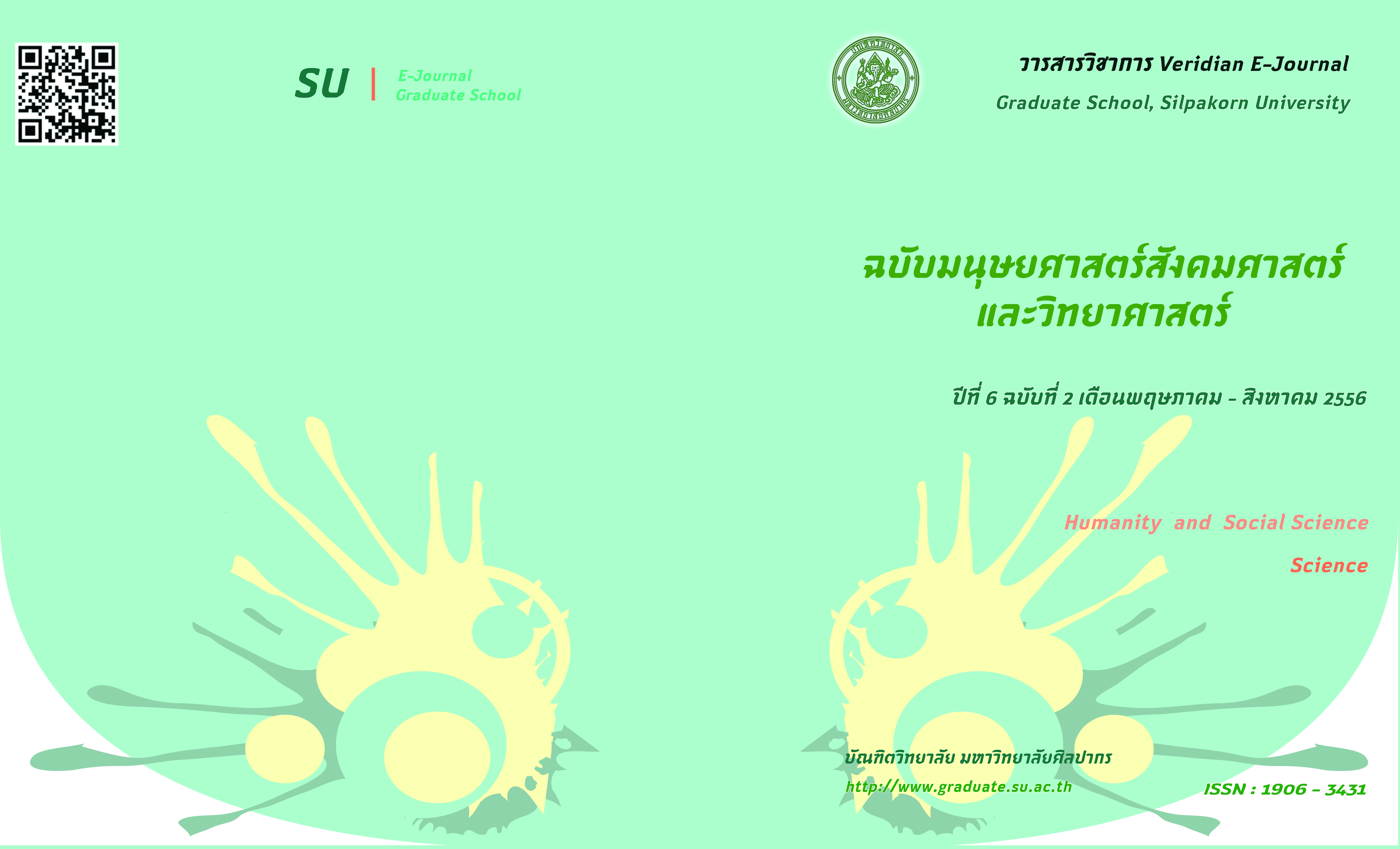หลักฐานทางศาสนาฮินดูที่พบในชุมชนโบราณเวียงสระจังหวัดสุราษฏร์ธานี
Main Article Content
บทคัดย่อ
บทคัดย่อ
การวิจัยครั้งนี้มีจุดประสงค์เพื่อศึกษาหลักฐานทางโบราณคดีที่พบจากการสำรวจและขุดค้นที่ชุมชนโบราณเวียงสระ ตำบลเวียงสระและตำบลทุ่งหลวง อำเภอเวียงสระ จังหวัดสุราษฎร์ธานี เพื่ออธิบายถึงลักษณะความเชื่อทางศาสนาฮินดูของชุมชนโบราณเวียงสระ โดยมีการวิจัย 3 ระยะ คือ ระยะที่ 1 รวบรวมข้อมูลเอกสารและศึกษาข้อมูล ระยะที่ 2 สำรวจและขุดค้นทางโบราณคดี ระยะที่ 3 วิเคราะห์และสรุปผล
ผลการวิจัยพบหลักฐานทางศาสนาฮินดูที่ชุมชนโบราณเวียงสระ 2 นิกาย คือ ไวษณพนิกาย (นับถือพระวิษณุหรือพระนารายณ์เป็นเทพเจ้าสูงสุด) และไศวนิกาย (นับถือพระศิวะหรือพระอิศวรเป็นเทพเจ้าสูงสุด) หลักฐานที่พบส่วนใหญ่อยู่ภายในเมืองโบราณเวียงสระ ตำบลเวียงสระ ประกอบด้วย พระวิษณุ นูนสูงและลอยตัว ศิลปะปัลลวะ อายุประมาณพุทธศตวรรษที่ 12 จำนวน 2 องค์ พระวิษณุ ศิลปะโจฬะ อายุประมาณพุทธศตวรรษที่ 16 จำนวน 1 องค์ พระวฏุกะไภรวะ (พระศิวะปางอุปัทวะ) ศิลปะโจฬะ อายุประมาณพุทธศตวรรษที่ 16 จำนวน 1 องค์ นอกจากนั้นยังพบฐานรูปเคารพซึ่งอาจทำขึ้นเนื่องในศาสนาฮินดูในเมืองโบราณเวียงสระ จำนวน 1 ชิ้น และนอกเมืองโบราณเวียงสระที่บริเวณวัดนาพอ ตำบลทุ่งหลวง จำนวน 1 ชิ้น และจากการขุดค้นทางโบราณคดีของผู้วิจัยในปี พ.ศ.2555 พบชิ้นส่วนพระหัตถ์ประติมากรรมจากซากโบราณสถานกลางเมืองโบราณเวียงสระ จำนวน 1 ชิ้น โดยชิ้นส่วนพระหัตถ์ที่พบสันนิษฐานว่าเป็นพระหัตถ์ข้างขวาบนของพระวิษณุลอยตัว ศิลปะปัลลวะที่หักหายไป และซากโบราณสถานที่ขุดพบกลางเมืองโบราณเวียงสระสันนิษฐานว่าเป็นศาลพระนารายณ์
หลักฐานทางโบราณคดีที่พบเหล่านี้แสดงให้เห็นถึงความนิยมในการนับถือศาสนาฮินดูทั้งสองนิกายที่ชุมชนโบราณเวียงสระ และยังสะท้อนให้เห็นถึงการใช้พื้นที่ของกลุ่มคนที่นับถือศาสนาฮินดูในบริเวณกลางเมืองโบราณเวียงสระภายในชุมชนโบราณเวียงสระได้เป็นอย่างดี
Abstract
The purpose of the research is to study the archaeological evidence which found from the archaeological excavation and surveying at Wiang Sa ancient settlement, Surat Thani province, inorder to describe Hindu religious characteristics of the ancient settlement. The research has consecutively three periods; 1) literature reviewing of written documents, 2) archaeological excavations and surveying, and 3) documents analysis and conclusion.
Hindu religious evidence found at Wiang Sa ancient settlement indicates two main sects of Hinduism which are; Vaishnavism (whom reveres Vishnu as the supreme god) and Shaivism (whom reveres Shiva as the supreme god). The evidences mostly found inside Wiang Sa town, Wiang Sa district, including two Vishnu sculptures in Pallava Art Style dating approximately 7th century, and another Vishnu sculpture in Chola Art Style dating approximately 11th century as well as the sculpture of Vatukabhairava in Chola Art Style dating approximately 11th century. In addition, two pedestals for statue which was supposedly produced for Hindu gods were also found in both inside and outside (at Wat Na Poh, Thung Luang district) of Wiang Sa town. From the excavation inside the town in 2012, the researcher also found a piece of sculptured hand at main religious monument, in which assuming that is the right hand of one of the 7th century Vishnu statues in Pallava Art Style. Furthermore, the main religious monument is also believed to be the Vishnu shrine for this ancient community.
From the archaeological evidence indicate that Wiang Sa ancient settlement preferably believes in both sects of Hinduism and the evidence also indicate cultural landscape development of Wiang Sa ancient settlement as well.

